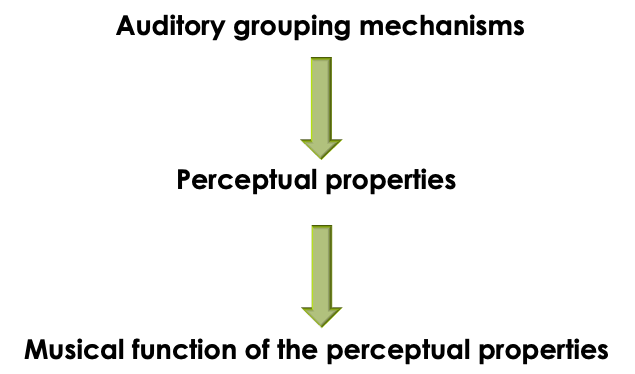Schoenberg | Five Pieces for Orchestra | TOGE Ex. 8
Writings | Taxonomy of Orchestral Grouping Effects | Examples
Example 8. Timbral emergence (sustained, transforming): Schoenberg, Five Pieces for Orchestra op. 16, iii, mm. 1–11
Audio example 5 [recording of BBC Symphony conducted by Pierre Boulez, CBS Masterworks]
Score-following video
All Examples
Auditory grouping gives rise to events from which perceptual properties are extracted, which then acquire musical functions within a given sonic context
Auditory grouping processes and the resulting perceptual qualities and corresponding orchestral effects. [Adapted from Goodchild and McAdams 2021, Fig. 1]
Timbral augmentation (sustained, stable): Debussy, La Mer, i, mm. 122–31
Timbral augmentation (sustained, transforming): Overture, mm. 20–25. Timestamp: 2:03
Timbral augmentation (punctuated): Sibelius, Symphony no. 5, op. 82, iii, mm. 474–482
Timbral emergence (sustained, transforming): Schoenberg, Five Pieces for Orchestra op. 16, iii, mm. 1–11
Sectional boundaries: Dolan’s (2013b) orchestral graph of Haydn, Symphony no. 100, ii. Colors represent different instruments and the line thickness corresponds to notated dynamics.
Other analytical examples based on this work
Extremely rapid shifts in contrast
Timbral emergence (sustained, transforming): Schoenberg, Five Pieces for Orchestra op. 16, iii, mm. 1–11











